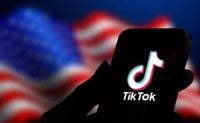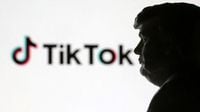The White House made headlines on Tuesday, August 19, 2025, by launching its first official TikTok account, a move that both reflects and amplifies the ongoing tug-of-war between digital innovation and national security concerns in the United States. The decision to join the wildly popular video-sharing platform comes at a time of intense scrutiny and legislative wrangling over the fate of TikTok, which is owned by the Chinese tech giant ByteDance. Despite a federal law mandating its sale to a U.S. company or outright ban, President Donald Trump has repeatedly delayed enforcement, keeping TikTok accessible to its 170 million American users—and, not coincidentally, to his own burgeoning political base.
The White House’s TikTok debut was anything but subtle. Its first post, a brisk 27-second clip, featured President Trump declaring, “I am your voice,” with the caption, “America we are BACK! What’s up TikTok?” According to Reuters, the account amassed roughly 4,500 followers within the first hour. By early Wednesday, the tally had soared to over 80,000, underscoring the platform’s viral pull and the administration’s determination to tap into its influence. The approach is no accident; as The Guardian reported, Trump credits TikTok with helping him secure the youth vote in his 2024 election victory over Kamala Harris, and he’s made no secret of his fondness for the app’s ability to reach younger Americans.
“The Trump administration is committed to communicating the historic successes President Trump has delivered to the American people with as many audiences and platforms as possible,” said White House Press Secretary Karoline Leavitt in a statement to Reuters. “President Trump’s message dominated TikTok during his presidential campaign, and we’re excited to build upon those successes and communicate in a way no other administration has before.”
Yet, the White House’s TikTok strategy is not without controversy—or risk. The app’s Chinese ownership has long been a lightning rod for national security concerns, with lawmakers and intelligence officials warning that American user data could be vulnerable to exploitation by Beijing. The roots of the current standoff stretch back to 2020, when Trump first called for aggressive action against TikTok’s owners, citing threats to U.S. national security, foreign policy, and the economy. This bipartisan anxiety culminated in a law, signed by President Joe Biden in 2024, requiring ByteDance to divest TikTok’s U.S. operations or see the app banned outright. The Supreme Court upheld the ban in January 2025, sparking market volatility and a brief removal of TikTok from American app stores.
Despite the legal mandate, President Trump has repeatedly extended the deadline for ByteDance to find a non-Chinese buyer. The original cutoff was set for January 19, 2025, the day before Trump’s inauguration. Since then, the deadline has been pushed first to April, then June, and now stands at September 17. Each extension has given TikTok a temporary reprieve, but also drawn criticism from lawmakers who accuse the administration of sidestepping national security concerns. As The Hindu noted, some in Congress argue that Trump’s repeated delays amount to flouting the law.
For Trump, the calculus appears to be as much political as it is strategic. His personal TikTok account, @realdonaldtrump, boasts more than 15 million followers—though his last post was on November 5, 2024, election day. The platform’s reach among Gen Z and millennials, a demographic that’s become increasingly pivotal in American elections, is hard to ignore. Trump’s embrace of TikTok stands in stark contrast to his earlier rhetoric, and even to his own executive order from 2020, which called for “aggressive action” against the app’s Chinese owners. The reversal, as The Guardian observed, followed Trump’s realization that TikTok was instrumental in helping him connect with young voters during his campaign. He even hosted TikTok CEO Shou Zi Chew at Mar-a-Lago and welcomed him at his inauguration.
Meanwhile, the legal and market repercussions continue to ripple outward. The Supreme Court’s affirmation of the ban law in January 2025 created uncertainty for tech giants and investors alike. If the ban is ever enforced, platforms like Meta (which owns Instagram and Facebook) and Alphabet (parent of YouTube) could benefit from a migration of TikTok’s vast user base. Instagram Reels and YouTube Shorts, both direct competitors, are poised to scoop up both users and ad revenue. But for companies like Oracle and Amazon, which provide backend services and e-commerce integration to TikTok, the threat of a ban looms as a potential financial blow. Oracle, for example, warned in its 2024 annual report that a TikTok ban could disrupt its revenue streams.
For content creators, the uncertainty is even more personal. Millions of American creators rely on TikTok not just for entertainment, but for their livelihoods. The app’s advanced editing tools and trend-driven discovery mechanisms have made it a cornerstone of the digital creator economy, especially for small businesses and solo marketers. As AINVEST reported, a ban could upend these revenue streams overnight, forcing creators to migrate to platforms that may not offer the same virality or market reach.
ByteDance, for its part, has been in ongoing talks with the U.S. government in hopes of brokering a sale that would satisfy both American lawmakers and Chinese regulators. Any agreement, ByteDance has emphasized, will be subject to approval under Chinese law—a stipulation that adds another layer of complexity to an already tangled negotiation. Trump has hinted that a deal is close, involving “a group of very wealthy people,” but has also acknowledged that his own tariffs on China may have made the process more difficult.
Some observers see the White House’s TikTok gambit as emblematic of a larger shift in political communication. With 170 million U.S. users—many of them young, diverse, and politically engaged—TikTok has become a battleground for influence, not just between parties, but between nations. Politicians across the spectrum, from Kamala Harris to Elon Musk, have flocked to the platform, recognizing its power to shape public opinion with short-form, emotionally resonant content. The Trump administration’s willingness to leverage TikTok, even as it negotiates its future, speaks to the app’s unique status as both a cultural phenomenon and a geopolitical flashpoint.
As the September deadline approaches, the fate of TikTok in the U.S. remains uncertain. Investors are watching closely, hedging bets on whether enforcement, another delay, or a last-minute sale will ultimately prevail. For now, the White House’s TikTok account stands as a symbol of both the promise and the peril of 21st-century digital politics—a place where innovation, security, and democracy collide in real time.
Whatever the outcome, one thing is clear: the White House’s TikTok strategy has already changed the game, blending old-school political messaging with the viral energy of a new digital age.


